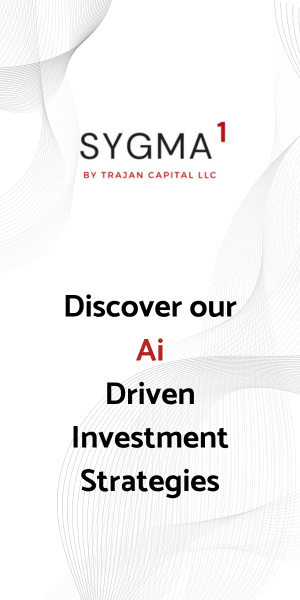Transforming Asset Management: How Neural Network AI Is Shaping Future Strategies and Risk Management

Introduction
In the rapidly evolving world of financial markets, the integration of Artificial Intelligence (AI), specifically through Neural Networks and deep learning, has revolutionized trading and risk management practices. Among various financial instruments, Contracts for Difference (CFDs) stand out for their unique characteristics and the significant advantages they offer when coupled with AI technologies. Unlike traditional securities, CFDs provide a broader dataset for analysis, derived from their leverage effect and the direct correlation with underlying asset movements. Furthermore, the CFD markets’ operation 24 hours a day, five days a week, presents unparalleled opportunities for real-time trading and risk management, enabling strategies that were previously impossible.
In this article, we delve into how Neural Network AI and deep learning technologies harness the vast data and continuous operation advantages of CFDs to enhance trading strategies and risk management in financial markets. Through the lens of advanced AI analytics and predictive modeling, we explore the transformative impact on CFD trading, offering insights into the future of finance where technology and market strategies converge for optimal performance.
Understanding Neural Network AI in Asset Management
Artificial Intelligence (AI) has become a cornerstone in various industries, with finance being one of the most impacted sectors. At the heart of AI’s revolution in finance are Neural Networks and deep learning technologies, sophisticated algorithms modeled after the human brain’s architecture and function. These technologies excel in identifying patterns and making predictions from vast datasets, a capability that’s incredibly valuable in the dynamic and complex world of financial markets.
Neural Network AI: The Basics
Neural Networks consist of layers of interconnected nodes or “neurons,” each designed to perform specific calculations. Data is fed into the input layer and processed through hidden layers where the actual computation occurs, leading to an output that provides the prediction or classification. Deep learning involves neural networks with many layers, enabling the analysis of complex, high-dimensional data with unprecedented depth and accuracy.
In finance, Neural Networks are used to forecast market movements, analyze risk, and optimize trading strategies. By processing historical data and real-time market inputs, these AI systems learn to predict future price movements, identify profitable trading opportunities, and assess potential risks, all at speeds and accuracies far beyond human capabilities.
Advantages in Financial Market Predictions
The primary advantage of Neural Network AI in finance lies in its ability to process and analyze the enormous volumes of data generated by markets daily. Traditional analysis methods cannot efficiently handle the diversity and complexity of market data, which includes not only price and volume information but also news articles, economic indicators, and social media sentiment. Neural Networks, however, thrive on this complexity, identifying subtle patterns and correlations that would be invisible to human analysts.
Moreover, Neural Networks’ predictive capabilities are continuously improved through learning – as more data becomes available, the system refines its models for even more accurate predictions. This aspect is particularly crucial in the fast-paced world of financial trading, where market conditions can change rapidly.
AI for Data Analysis and Decision Making
The adoption of Neural Network AI in finance has also transformed data analysis and decision-making processes. AI systems offer comprehensive market analysis, highlighting potential investment opportunities and risks without human biases, thus supporting more informed and strategic trading decisions. Additionally, these systems can simulate various trading scenarios, allowing traders to assess the potential outcomes of different strategies before implementation.
The integration of Neural Network AI in financial applications, especially in trading and risk management, represents a significant leap forward. By leveraging deep learning technologies, financial professionals can navigate the complexities of the market with enhanced precision, speed, and efficiency.
Advantages of Neural Network AI for Trading CFD Instruments
Contracts for Difference (CFDs) represent a significant segment of the financial market, offering traders and investors the flexibility to speculate on price movements without owning the underlying asset. This unique financial instrument has become increasingly popular, especially in the context of AI-driven trading strategies, due to the vast amount of data it generates and the continuous trading opportunities it presents. Neural Network AI, with its superior data processing and predictive capabilities, stands at the forefront of exploiting these advantages, transforming CFD trading into a more efficient and profitable endeavor.
Unpacking the Data Advantage
CFDs, by their nature, provide a rich dataset for analysis. Each contract reflects the price movements of the underlying asset, whether it’s a stock, commodity, currency pair, or index, offering a detailed view of market dynamics. Unlike traditional securities, CFDs encapsulate additional dimensions of market behavior, including leverage effects and short-selling opportunities. This wealth of data becomes a fertile ground for Neural Network AI, which thrives on high-dimensional datasets.
By harnessing deep learning algorithms, AI systems can analyze patterns across multiple time frames and conditions, uncovering insights that would be challenging, if not impossible, for human traders to detect. For instance, subtle correlations between market indicators or the predictive power of specific price movements can be identified and utilized for trading strategies. This comprehensive analysis enables AI-driven CFD trading platforms to anticipate market trends with a high degree of accuracy, providing a significant edge over traditional trading approaches.
Leveraging 24/5 Market Access
Another intrinsic advantage of CFD trading is the market’s operation 24 hours a day, five days a week. This continuous trading window is particularly beneficial for Neural Network AI systems, which can monitor and analyze market conditions in real-time, reacting instantaneously to price movements and news events. The ability to trade around the clock, in response to global market developments, allows for the maximization of trading opportunities and the minimization of risks, as the system can adjust its strategies based on live data, even when major markets are closed.
The 24/5 nature of the CFD market also enhances risk management capabilities. AI systems can deploy strategies that require constant market access, such as stop-loss orders and automated hedging techniques, to protect against unexpected market movements. This continuous oversight ensures that positions are managed proactively, significantly reducing the potential for large, unforeseen losses.
Case Studies of AI-driven CFD Trading Successes
Real-world applications of Neural Network AI in CFD trading have demonstrated its transformative potential. For example, AI-driven platforms have successfully predicted market downturns and rallies by analyzing the interplay between CFD data and external economic indicators, allowing traders to adjust their positions ahead of significant market movements. Additionally, by employing sophisticated risk management algorithms, these platforms have navigated volatile market conditions, securing profits while mitigating losses.
One notable case involved an AI system that identified a profitable trading opportunity in a commodity CFD by analyzing trends in related currency pairs and global economic news. By executing trades based on these insights, the system capitalized on market movements that were overlooked by human traders, showcasing the power of integrating deep learning with CFD trading.
Emerging Trends in AI: The Rise of Autonomous Learning Investment Strategies
An exciting development in the evolution of AI within the realm of CFD trading and financial markets at large is the emergence of autonomous learning investment strategies. These strategies represent a significant leap forward, as they enable AI systems to not only analyze data and predict market trends but also learn and adapt their strategies based on market outcomes autonomously.
Autonomous Learning: A Game-Changer
Autonomous learning algorithms, a subset of machine learning, are designed to self-improve over time without being explicitly programmed to do so after their initial deployment. This means they can adjust their trading strategies based on the success or failure of previous trades, learning from the market’s feedback loop. Such algorithms are incredibly sophisticated, capable of navigating the complex and ever-changing landscape of the CFD market with increasing efficiency and effectiveness.
This shift towards autonomous learning in AI trading systems is a game-changer. It promises to significantly enhance the accuracy of market predictions and the efficacy of risk management strategies. By continuously refining their models and strategies, these AI systems can identify subtle market shifts and trends earlier and with greater precision than ever before, providing traders with a formidable advantage.
Impact on Risk Management
In terms of risk management, autonomous learning investment strategies bring an additional layer of sophistication. These strategies can dynamically adjust risk parameters in real-time, tailoring the level of exposure based on current market volatility and historical performance data. This proactive approach to risk management not only helps in safeguarding investments but also in capitalizing on market opportunities as they arise, ensuring optimal balance between risk and reward.
The Future Is Now
The development of autonomous learning investment strategies marks a pivotal moment in the future of AI in trading and risk management. As these technologies continue to mature, they will undoubtedly redefine the landscape of CFD trading, making it more dynamic, secure, and profitable. The integration of autonomous learning algorithms into AI-driven trading platforms heralds a future where trading strategies are not just reactive but are anticipatory, adapting to market changes with unprecedented agility.
This evolution towards more autonomous, self-learning AI systems underscores the tremendous potential of AI in transforming CFD trading and risk management. As we venture further into this future, the collaboration between AI and human expertise will become even more critical, blending the best of both worlds to navigate the complexities of the financial markets with confidence and insight.


